Safeguarding Owls Through Implementation of ‘Owl Conservation Action Plan’ in Central Nepal
Project Leader: Raju Acharya
Location: Gandaki Province, Nepal
Funding Agency: Whitley Fund for Nature, UK
Owls in Nepal face threats from habitat destruction, illegal hunting, and trade driven by superstitions. The government’s Owl onservation Action Plan (2020-2029) addresses these issues. About 1,500 owls are hunted or traded annually due to low awareness, weak law enforcement, hunting for meat and profit, and traditional beliefs. The loss of old trees and nesting sites in semi-urban areas worsens the problem.
The project seeks to address these challenges by following measures:
- Enhance the capacity of law enforcement, policymakers, and owl envoys to achieve a 25% reduction in hunting and trade.
- Raise awareness among 3,000 students and the public through 100 conservation camps.
- Establish five catapult-free zones to reduce catapult use by 60%.
- Restore and rehabilitate 1,200 hectares of owl habitat by protecting old trees and installing artificial nests.
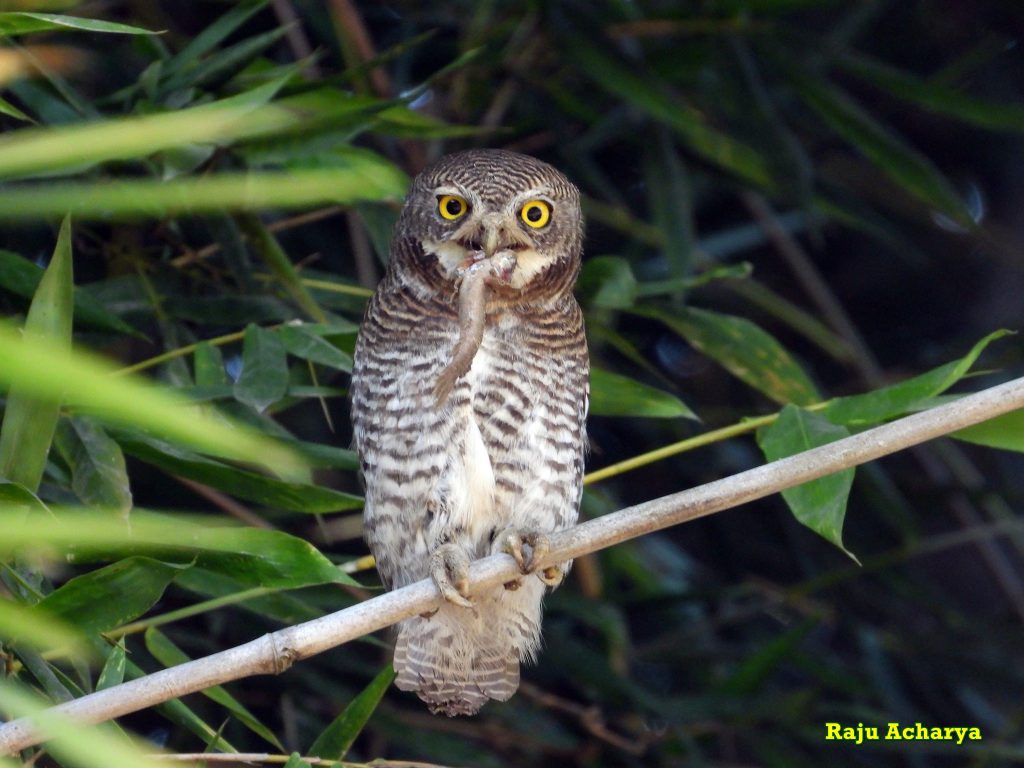
Plantation Project in Dhading Nepal
Location: Dhading, Nepal
Funding Agency: Stiftung Unternehmen Wald, Germany
Native biodiversity loss disrupts ecosystems and reduces essential services like clean air, water, and crop pollination. Planting native seedlings is crucial for conservation as they adapt well to local conditions and support wildlife. Community involvement enhances environmental stewardship, raises awareness, restores habitats, and strengthens ecosystem resilience, ensuring long-term sustainability.
The project aims to achieve following activities:
- Plant 7,000 native seedlings and secure with fencing.
- Involve indigenous people, local communities, and the Local Forest User Group in the plantation.
- Regularly monitor and replant dead or damaged seedlings the following year.
- Ensure native biodiversity conservation and enhance ecosystem services.
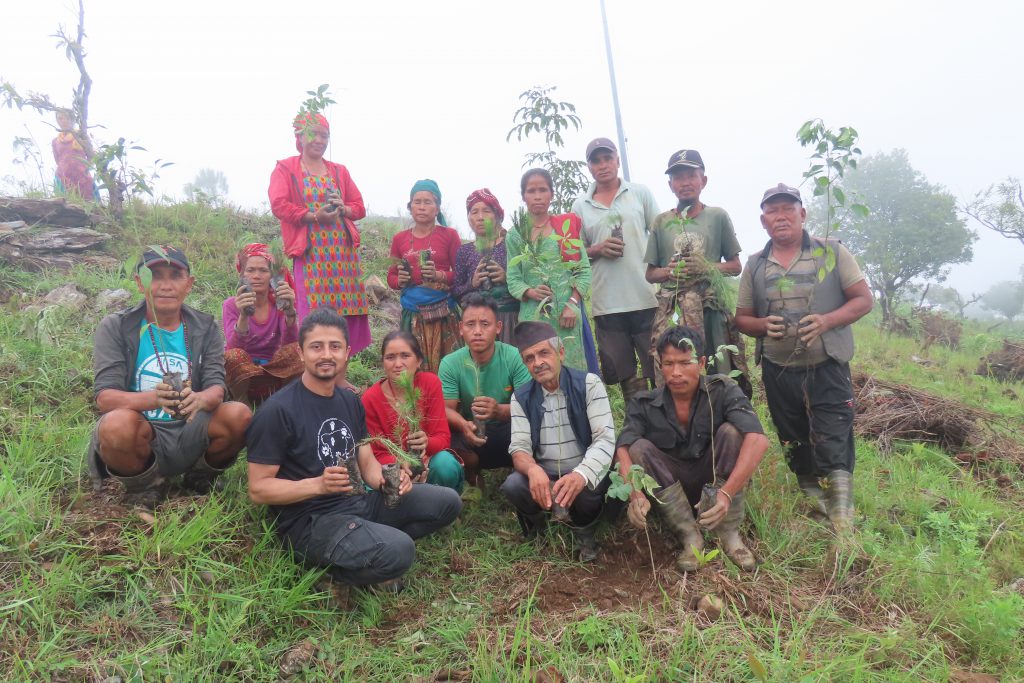
Empowering Communities for Long-term Conservation of Pangolin in Western, Nepal
Project Leader: Sofiya KC
Location: Surkhet, Nepal
Funding Agency: The Rufford Foundation, UK
Pangolins in Nepal, including the Critically Endangered Chinese Pangolin and Endangered Indian Pangolin, face threats from rafficking, habitat degradation, and forest fires. Despite legal protection, illegal trade and poaching continue. Local support is crucial. Studies in Karnali Province show negative attitudes and high poaching rates. This project aims to raise awareness and engage communities in conservation efforts.
The project is designed to conduct following activities:
- Use camera traps and burrow monitoring to identify and prioritize potential pangolin habitats.
- Train six indigenous youth in pangolin conservation using a citizen science approach.
- Sensitize local communities and students on pangolin conservation through workshops and camps.
- Produce and distribute materials highlighting the ecological significance of pangolins.
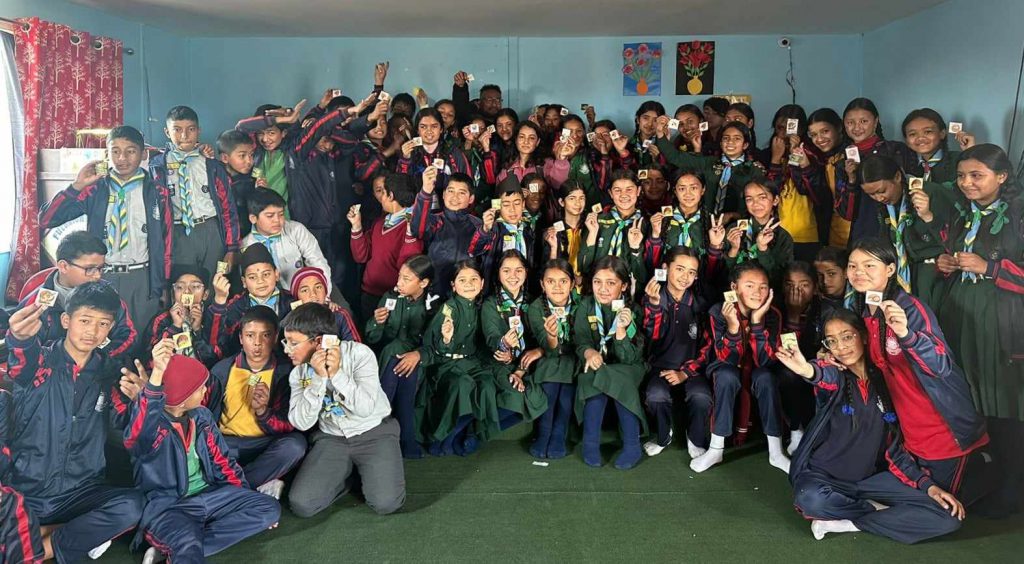
Improving Habitats for Myotis csorbai, An Endemic Bat of Nepal
Project Leader: Barsha Adhikari
Location: Syangja, Nepal
Funding Agency: The Rufford Foundation, UK
Bats, often feared and killed, are among the least studied mammals. Nepal hosts about 56 species, including the endemic Csorba’s Mouse-eared Myotis. Despite some research, conservation efforts are inadequate. Tourism disturbance, habitat loss, pesticide use, and lack of awareness threaten bats. This project aims to conserve bats by minimizing threats.
The project is designed to conduct following activities:
- Conservation camps to community to reduce the disturbance in roosting sites and enhance knowledge on bat conservation.
- Training to local communities in production and use of organic fertilizer to reduce harmful effects on bats and improve forage quality.
- Promotion of bat garden by planting insect attracting flowers to increase the foraging ground and prey availability.
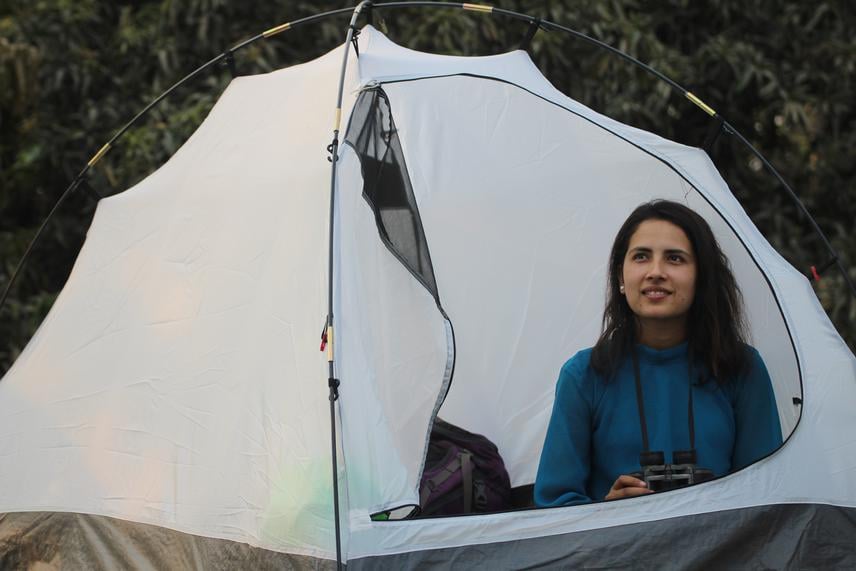
Stream Frog Conservation Project
Project Leader: Suman Sapkota
Location: Dhorpatan Hunting Reserve and Annapurna Conservation Area, Nepal
Funding Agency (financial and technical): The Rufford Foundation, UK; Stiftung Artenschutz, Germany; Nagao Natural Environment Foundation, Japan; Amphibian Survival Alliance, USA
Nepal has 56 amphibian species, including two threatened ones, with limited research and conservation funding. Amphibians face threats from illegal hunting and trade, but these issues are not well understood. The project will document breeding sites and protect
stream frogs in the Himalayas, assess hunting and trade impacts, and develop species specific conservation plans and research priorities.
The project will achieve following activities:
- Identify Nanorana rostandi breeding sites in Dhorpatan and install informational hoarding boards.
- Document hunting and trade of stream frogs in central and western Nepal.
- Study amphibian vocalization and calling patterns.
- Educate community members and students on stream frog conservation.
- Enhance the knowledge of stakeholders on amphibian identification and ecology
- Engage policy makers and government bodies in devising conservation actions.
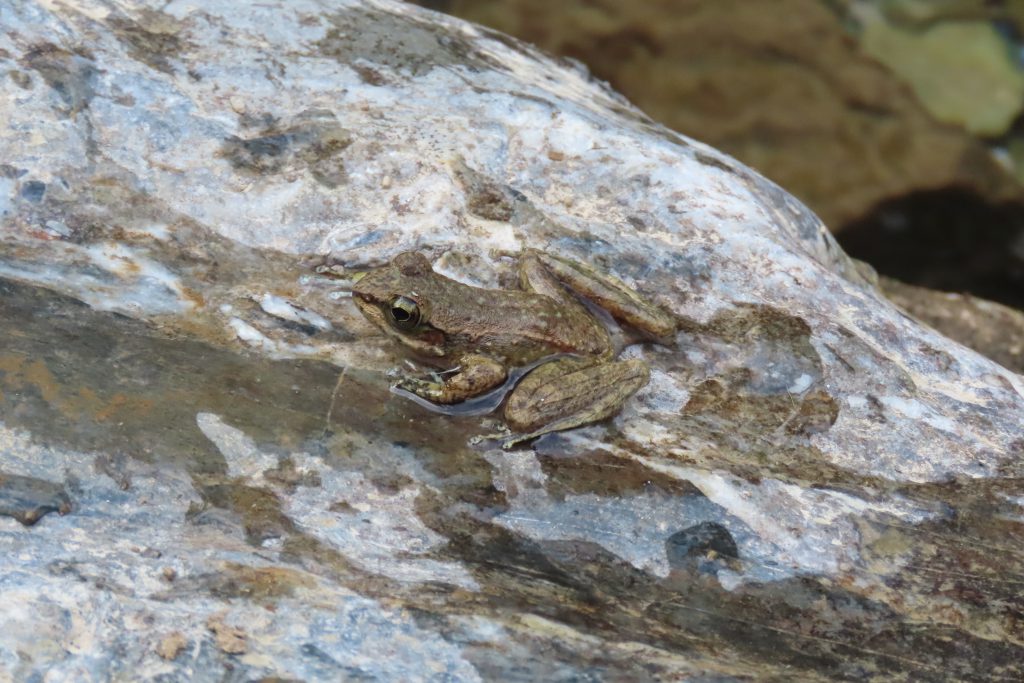
Wildlife Research Techniques Training
Project Leader: Raju Acharya
Location: Syangja, Nepal
Funding Agency (financial and technical): Bernd Thies Foundation, Switzerland; Accordeos Foundation, Switzerland
Nepal’s wildlife research, starting with tigers and leopards in the 1970s, now faces a gap in formal training for students eager to work on lesser-known species. A 19-day in-field training program aims to address this by offering sessions on wildlife policy, statistics, camera trapping, research design, scientific writing, and media, along with field visits for various species. Participants will gain crucial skills and network with biodiversity experts and peers.
The project aims to achieve following activities:
- Train 26 early-career university students in wildlife research techniques.
- Foster a strong network between trainees and biodiversity experts.
- Offer a six-month online internship with FON Nepal.
- Monitor and guide trainees’ work during and after the internship.
- Review research proposals and provide feedback to secure funding.
- Provide technical and financial support as needed.
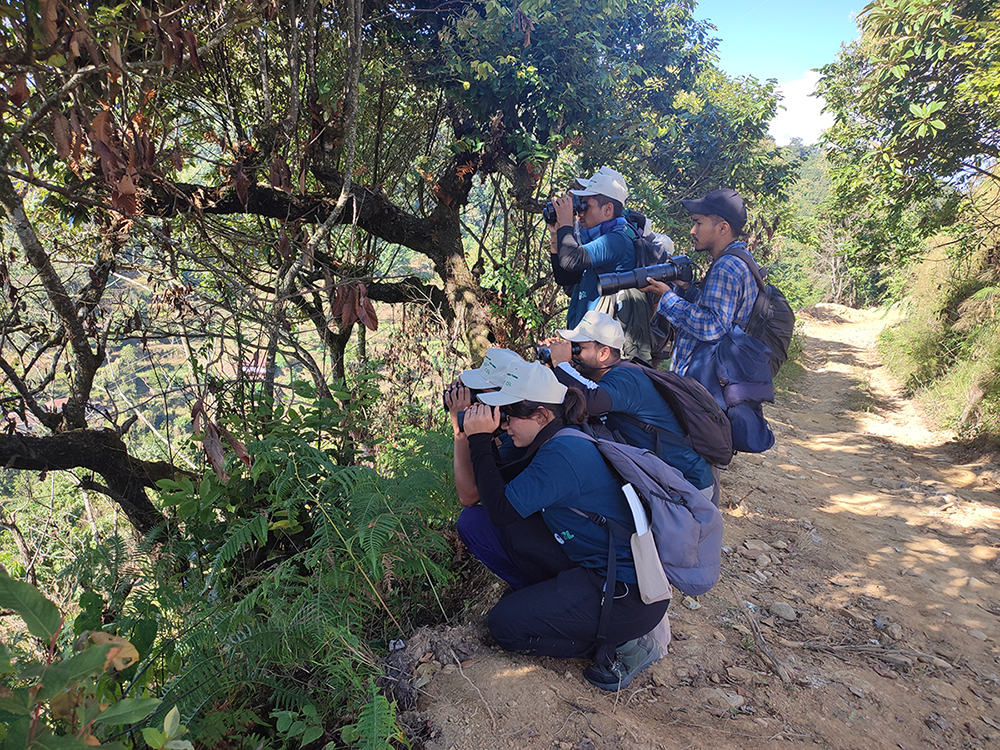
Nepal Owl Festival
Project Leader: Raju Acharya
Location: Dhanusa, Nepal
Funding Agency: Bernd Thies Foundation, Switzerland
Nepal hosts 23 of the world’s 225 owl species, with 9 threatened. Key threats include illegal trade, superstitions, habitat destruction, and lack of data. Annually, around 1500 owls are smuggled to India and China. Despite their ecological role, owls get less conservation focus compared to larger animals. The Government of Nepal’s Owl Conservation Action Plan aims to raise awareness, curb illegal activities, and foster partnerships. The Nepal Owl Festival supports these goals by combining conservation efforts with local culture, cuisine, and traditional games.
The project is designed to achieve following objectives:
- Raise awareness among locals, organizations, media, and political leaders to discourageowl hunting and trade.
- Build local capacity for bird conservation through ‘Owl Conservation Camps’ in schools and Community Forest User Groups.
- Recognize and honor conservationists working on owls in Nepal and nearby countries.
- Promote ecotourism by attracting visitors and showcasing local wildlife and culture.

